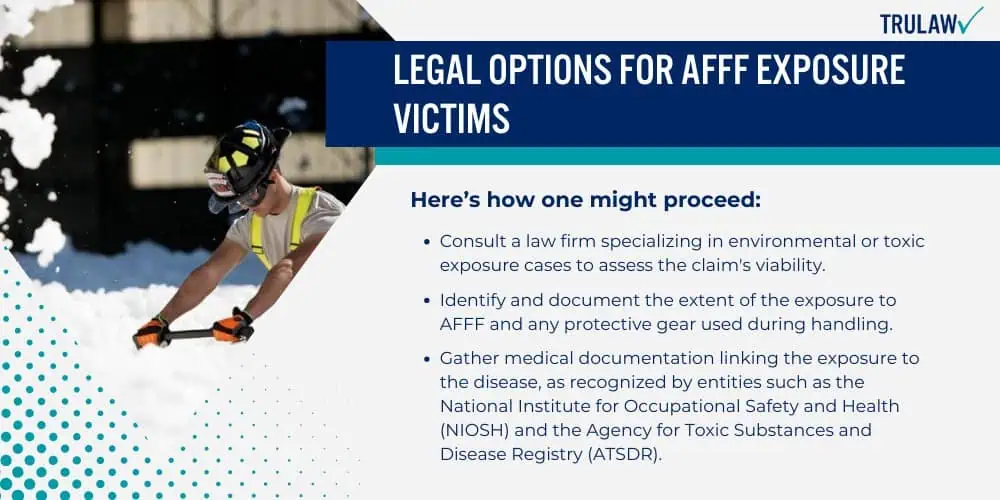Exposure to AFFF firefighting foam is a significant concern, mainly due to the presence of PFAS, chemicals that have been linked to several serious health conditions.

Types of Cancers Linked to AFFF
PFAS contamination from AFFF, often referred to as “forever chemicals” due to their persistence in the environment, has been associated with an increased risk of various types of cancers.
Some of the cancers that have shown potential links to these substances include:
- Kidney Cancer: Studies suggest a relationship between PFAS exposure and elevated rates of this cancer type.
- Testicular Cancer: This rare form of cancer has also seen higher incidence rates in populations with significant PFAS exposure.
- Bladder Cancer: Some evidence points to bladder cancer development in individuals exposed to high levels of PFAS.
- Prostate Cancer: Research is ongoing to understand the full impact of AFFF exposure and the subsequent risk of developing this form of cancer.
Other Health Problems Caused by PFAS in AFFF
Beyond cancer, AFFF and the potentially harmful substances it contains, including PFAS, have been connected to a range of other health problems.
Here we list other negative effects identified:
- Reproductive Health: Exposure to PFAS can lead to reproductive issues and hormonal imbalances.
- Thyroid Disease: There is a strong link between PFAS exposure and thyroid illnesses, which can cause a host of severe health complications.
- Immune System Disorders: PFAS can impact the immune system, potentially reducing its efficacy and increasing susceptibility to infections.
- Respiratory System Issues: Toxic exposure may also cause problems within the respiratory system, although further investigation is ongoing to determine the extent.
Research indicates a breadth of negative health effects stemming from PFAS in AFFF, with continuous discovery shedding light on the health risks faced by those exposed to these toxic firefighting foams.









